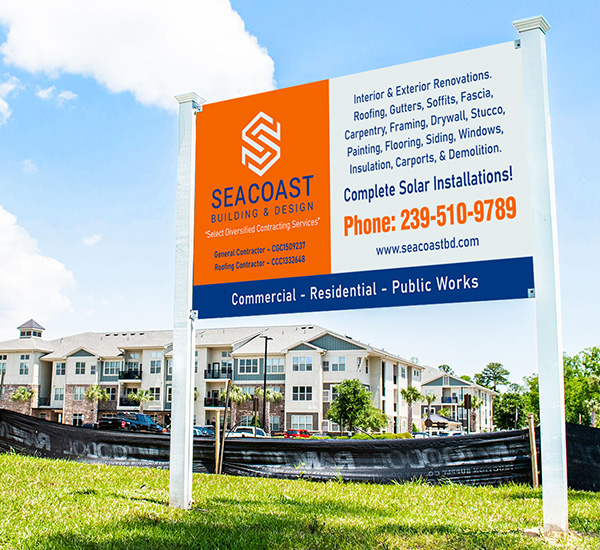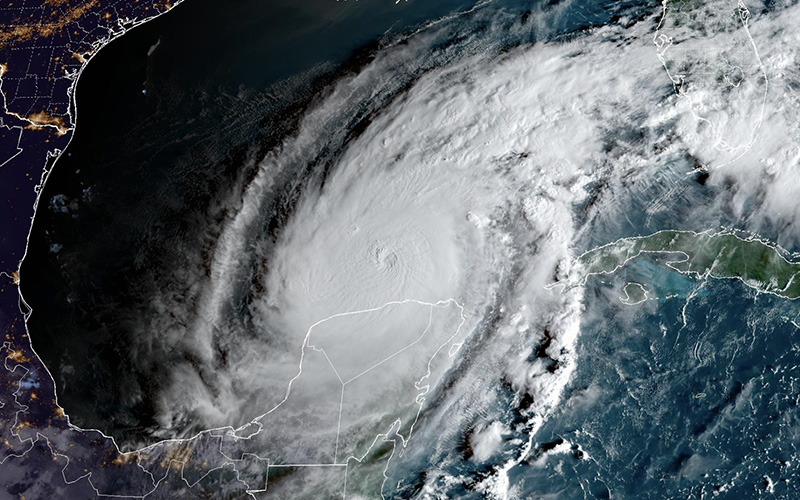March 28, 2025
Prepare for Hurricane Season
If you live in an area prone to hurricanes and flooding, knowing what to expect with a significant storm and what you can do to safeguard your home can help you weather the storm and ease your recovery. The Atlantic hurricane season runs from June 1 to November 30, while the Pacific hurricane season runs May 15 to November 30.
If hurricanes seem to worsen, you’re not imagining it. Oceans are heating up, affecting when and how storms form and behave. Experts predict future hurricanes will bring more rain and more intense winds. Additionally, they anticipate an increase in Category 4 and Category 5 hurricanes – those with the highest wind speeds, which tend to be most destructive.
While hurricanes themselves are changing, the best ways to prepare are not. Let’s look at how to prepare for a hurricane before a storm hits and what you can do afterward to reduce damage and return to normal.
Review Your Insurance
This step is often missing from a preparedness outline. It is important to understand exactly what your homeowners insurance covers so that you can adequately repair your home after a natural disaster, such as a hurricane. The Insurance Information Institute’s hurricane season insurance guide is a good place to start. https://www.iii.org/article/hurricane-season-insurance-guide
Check if your insurance covers flood damage; if not, consider looking into flood insurance. This applies to renters as well. Flooding is not generally covered by renters insurance. If you rent in an area at risk of flooding, consider a separate flood insurance policy in addition to your current renters insurance. If you have questions about your current policy, contact a trusted insurance professional to avoid surprises during recovery.
Additionally, you should take inventory of your property annually and ensure you have enough insurance to replace personal possessions. If you need to evacuate when the storm hits, bring your home inventory list along with other vital documents to fast-track your recovery. This will speed up your claims process and help you apply for disaster aid. Here is more assistance: https://www.kin.com/blog/what-is-home-inventory/
Make a Hurricane Evacuation Plan
Most experts recommend making an evacuation plan before any actual hurricane is in the forecast. Acting early helps ensure that your plan is rational and well thought out rather than an emotional response to the fear that a hurricane in the forecast can cause. Before you begin, make sure your Wireless Emergency Alerts (WEAs) provided by the government are turned on, and check to see whether you’re in an evacuation zone so you know ahead of time what to expect in the event of a storm.
Part of the plan is to make arrangements for where you’ll stay. This might mean making a primary plan to stay with friends or family who live out of the danger zone and a shelter fallback plan. If a storm is looming and you can’t evacuate quickly, have your county’s shelter information on hand. As you plan, remember to include your pets: Some shelters won’t take pets, and you may need relevant paperwork, such as vaccination information, insurance documents, and medical records.
Decide when you’ll evacuate. While waiting until official channels issue an evacuation order is fine, certain groups may wish to evacuate sooner to ensure they have plenty of time to get where they’re going. If you or someone you’ll be traveling with is elderly, pregnant, sick, or has special needs, then you may want to plan an early evacuation to keep everyone safe. Those who live in mobile homes or low-lying coastal areas should generally evacuate early, and those towing large vehicles may have to do so as well, as high winds can make driving these vehicles dangerous.
Gather Evacuation Essentials
When you’ve planned how and when you’ll evacuate, it’s time to decide what you’ll bring. You can pack many of the needed items ahead of time, and it’s wise to do so to make the evacuation process as seamless as possible. This list includes a photo ID, medical essentials (medicine, glasses, equipment, etc.), a flashlight and extra batteries, a battery-operated portable radio, bottled water, nonperishable foods, spare clothing and shoes, blankets, toiletries, important papers (homeowners insurance policy, will, deed to your house, etc.), contact information for loved ones-doctor-insurance agent, cash and credit cards, extra gas for your car, a first-aid kit, and an inventory of your belongings.
These are the most important things to have stocked to prepare for hurricane season: Enough water and canned food to last at least a week, flashlights or headlamps with a supply of extra batteries, candles and matches, a whole-home generator, spare gasoline for your vehicles, generator, and any hand tools you might need for clearing fallen branches, propane gas or charcoal for any outdoor grills, an ax in the attic in case there’s severe flooding.
Sometimes, there are special sales at the start of hurricane season. For instance, Florida residents can prepare for a hurricane by purchasing certain supplies without sales tax during the first two weeks of hurricane season. Most of the supplies you need will last at least a year, but you must check on them to ensure you’re well-equipped.
Prepare for Floodwaters
Flooding is the most costly and common type of storm damage, so taking measures to reduce the potential destruction to your home and belongings is essential. Consider storing valuables and crucial documents above the ground floor in a waterproof container—block doors with sandbags and plastic or urethane foam. Neither method is perfect, but both can help block the main entryway water has to your house.
Ensure your sump pump is working properly and has a backup power source (usually from a battery or pressure from the municipal water supply). If you don’t have a sump pump and the type of construction of your house allows for it, you may want to consider having one installed.
Consider keeping an ax in the attic in case of severe flooding, but understand that axing your way out of the attic is difficult and dangerous. In addition to an ax, consider storing a red or orange flag and a pole you can raise it on, should you need to alert rescuers that you require help.
Secure Your Home in Advance
If you are not in immediate danger, there are ways to secure your home in advance to protect against flooding and hurricane-force winds. If you live in an area regularly affected by these natural disasters, consider adding these five items to your home maintenance list.
- Clean gutters and drains. Regular maintenance prevents water from collecting around your home. In severe storms, addressing water flow is especially important to prevent further flooding damage.
- Test your sump pump. A malfunction can cause flooding, so check and remove debris regularly to prevent clogging.
- Check the foundation and roof. Cracks in a home’s foundation could worsen flooding or plumbing issues. Regularly inspect your roof covering to ensure shingles are secured and none are missing.
- Maintain your lawn. Cut weak branches and trees that could fall on your home and trim shrubbery.
- Install surge protection. Power surges can damage your appliances and electronics. Adding surge protection to your home and heating and air conditioning systems can decrease the risk.
Take Immediate Precautions When a Storm Is Near
If you are facing an impending storm, there are immediate precautions you can take to protect your home and your family.
- Remove debris. Hurricanes and tropical storms bring strong winds, so clear your lawn. Items could be damaged or destroyed, or they could cause damage to your home or other property. If possible, bring possessions indoors and secure objects that can’t be brought inside.
- Cover windows. Permanent storm shutters offer protection, or you can board windows with plywood.
- Shut off utilities. If local authorities instruct you to do so, shut off gas, water, and electricity.
Contact Seacoast Building & Design in advance. They have a service to cover all this and more. See the webpage here: https://seacoastbd.com/hurricane-preparedness/

Seacoast Building & Design
Office: (941) 500-5431
Hours of Operation:
Weekdays – 8 am to 6 pm
Saturday – 9 am to 3 pm
Or by Special Appointment.
Payment Methods:
Cash, Visa, Master Card, Amex, Discover, Invoice, Wire, ACH
Company Owners:
Clear & Chandra Dayland

